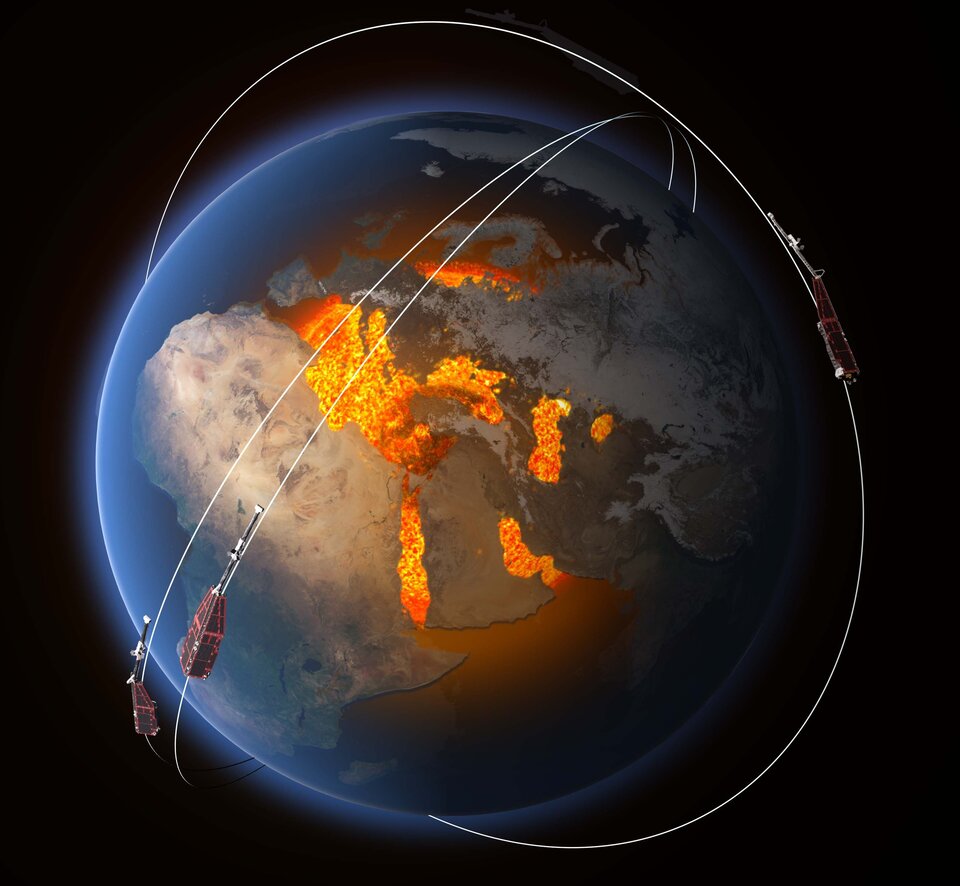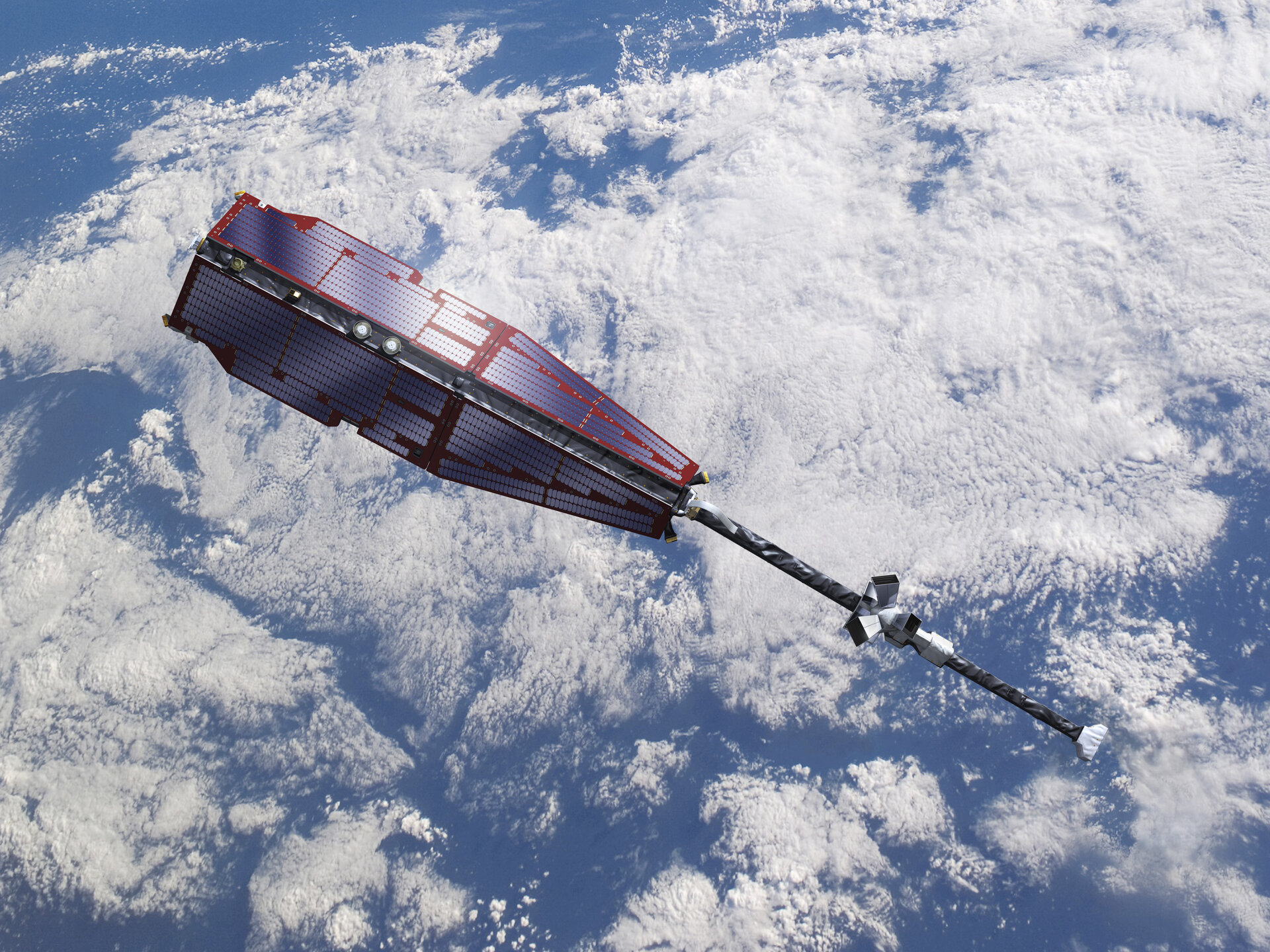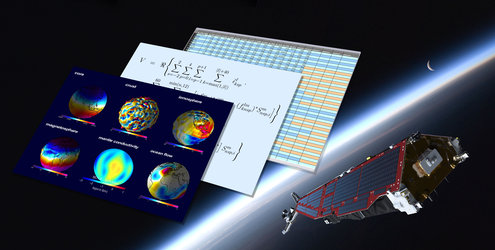Introducing Swarm
ESA’s magnetic field mission is dedicated to unravelling one of the most mysterious aspects of our planet: the magnetic field.
Although invisible, the magnetic field and electric currents in and around Earth generate complex forces that have immeasurable impact on everyday life.
The field can be thought of as a huge bubble, protecting us from cosmic radiation and charged particles that bombard Earth in solar winds. However, it is in a permanent state of flux. Magnetic north wanders, and every few hundred thousand years the polarity flips so that a compass would point south instead of north. Moreover, the strength of the magnetic field is constantly changing – and is currently showing signs of significant weakening.


Access the video
Launched on 22 November 2013, Swarm is the fourth in a series of pioneering Earth Explorer research missions, following on from GOCE, SMOS and CryoSat. It is also ESA’s first constellation of satellites to advance our understanding of how Earth works.
Harnessing European and Canadian technological excellence, the three identical Swarm satellites are measuring precisely the magnetic signals that stem from Earth’s core, mantle, crust and oceans, as well as from the ionosphere and magnetosphere.

By analysing the different characteristics of the observed field, this state-of-the-art mission will lead to new insight into many natural processes, from those occurring deep inside the planet to weather in space caused by solar activity. In turn, this information will yield a better understanding of why the magnetic field is weakening.
The geomagnetic field models resulting from the mission will provide new insights into Earth’s interior. These data along with measurements of atmospheric conditions around the orbiting satellites will further studies into Earth’s weakening magnetic shield, space weather and radiation hazards.
As well as furthering science, the measurements delivered by the three Swarm satellites will be valuable for a range of applications. For example, the data will be put to practical use to help improve the accuracy of navigation systems including those systems carried on satellites, to advance earthquake prediction and to improve the efficiency of drilling for natural resources.
Back to Swarm homepage |







